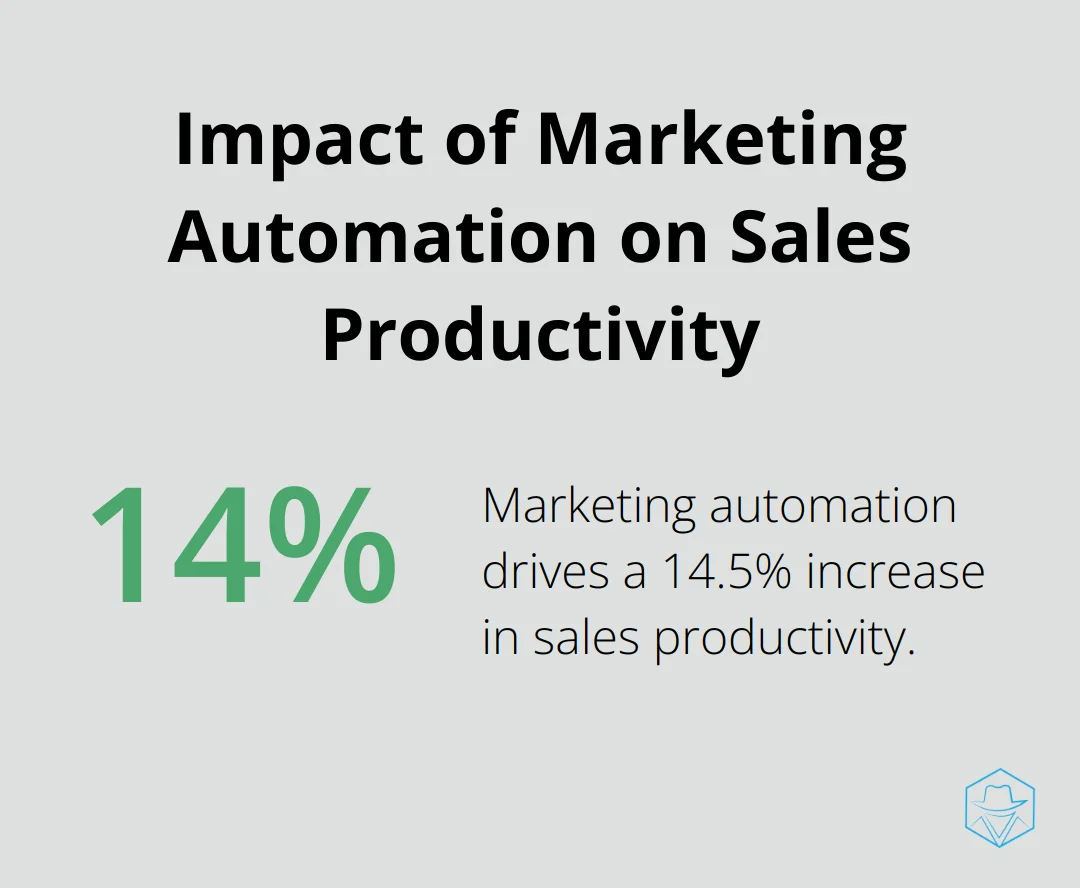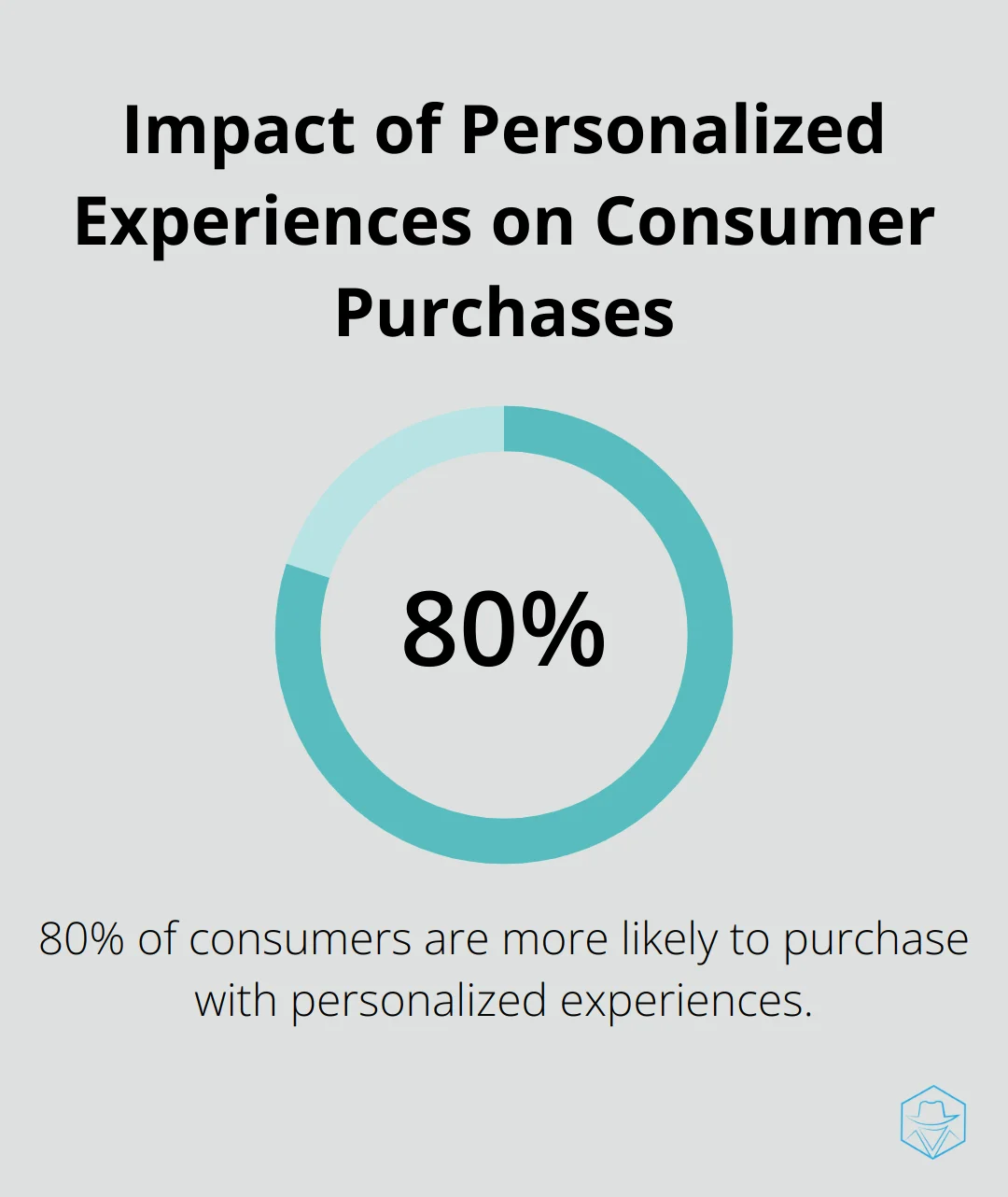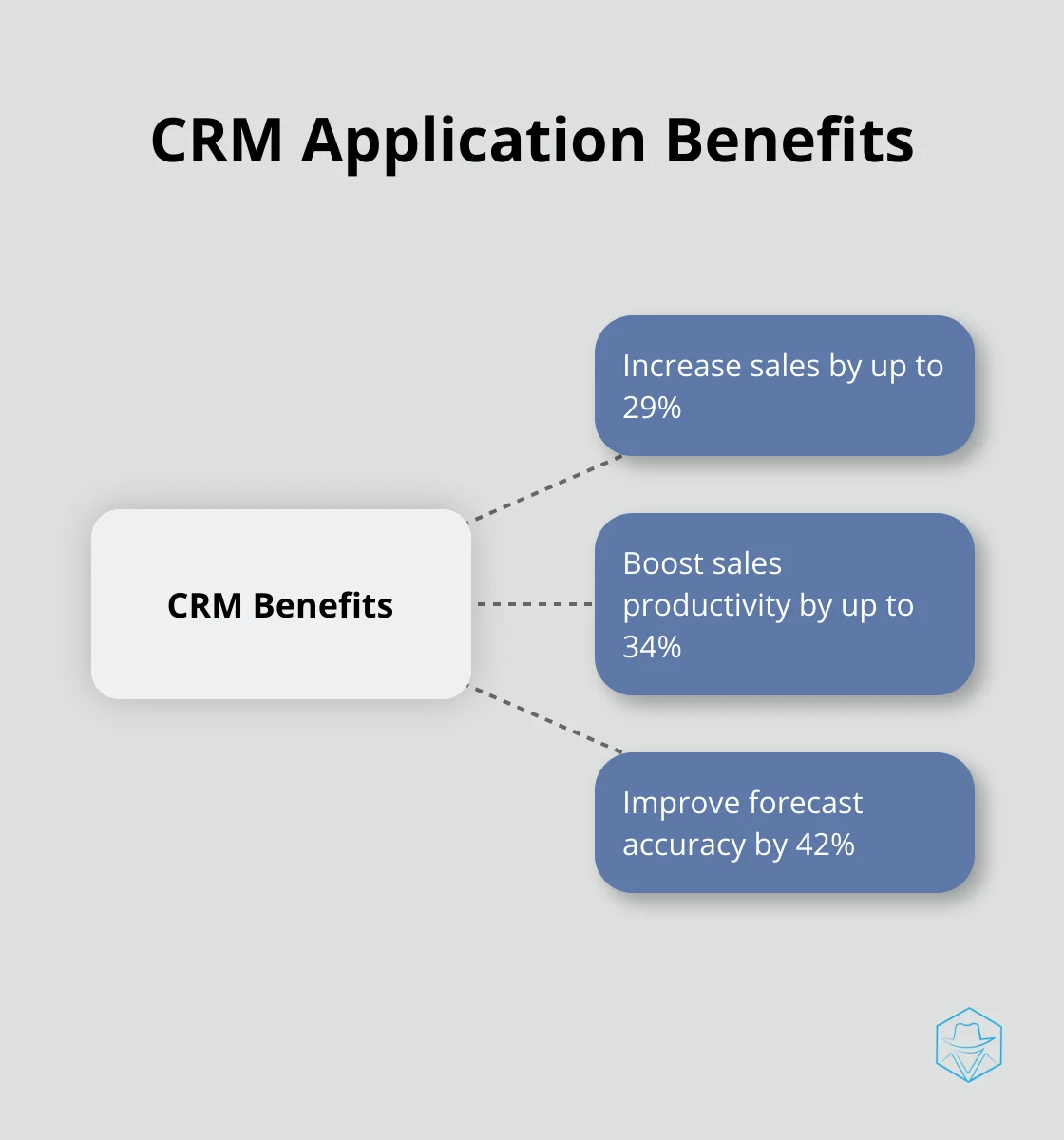Marketing Automation Best Practices: Drive Results

Marketing automation has revolutionized the way businesses connect with their audience. At Drop Cowboy, we’ve seen firsthand how implementing marketing automation best practices can drive remarkable results for companies of all sizes.
In this post, we’ll explore the key strategies and tools that can help you maximize the impact of your marketing automation efforts. Get ready to discover how you can streamline your processes, boost engagement, and achieve better ROI through smart automation techniques.
What Is Marketing Automation?
The Core of Marketing Automation
Marketing automation transforms how businesses connect with their audience. It uses software to automate repetitive marketing tasks, from email sending to customer segmentation and social media scheduling. This technology empowers companies to streamline processes and achieve better results.
Key Components of Marketing Automation
A robust marketing automation system consists of several essential elements:
- Central Database: This stores all customer information, often integrated with a Customer Relationship Management (CRM) system.
- Segmentation Tools: These allow for audience division based on various criteria, enabling targeted messaging.
- Campaign Management: Tools for creating, scheduling, and tracking marketing campaigns across multiple channels.
Benefits for Businesses of All Sizes
Marketing automation isn’t exclusive to large corporations. Companies of all sizes can reap its rewards:
- Small Businesses: It allows them to compete with larger companies by delivering personalized experiences at scale.
- Large Enterprises: They can manage complex, multi-channel campaigns efficiently.
A study by Nucleus Research found that marketing automation drives a 14.5% increase in sales productivity. This boost allows teams to focus on strategy and creativity instead of repetitive tasks.

Lead nurturing also sees significant improvements. The Annuitas Group reports that businesses using marketing automation experience a 451% increase in qualified leads. This surge results from delivering the right message to the right person at the right time, based on behavior and preferences.
Debunking Marketing Automation Myths
Despite its benefits, some misconceptions about marketing automation persist:
- “It’s Impersonal”: In reality, good marketing automation is highly personalized, using data to tailor messages to individual preferences and behaviors.
- “It’s Only About Email”: While email plays a significant role, modern platforms handle social media, SMS, web personalization, and more.
- “Set It and Forget It”: Effective marketing automation requires ongoing optimization and adjustment based on results.
The Power of Integration
Marketing automation shines when integrated with innovative communication tools. For instance, platforms that combine automation with ringless voicemail and SMS (like Drop Cowboy) allow businesses to create highly personalized, multi-channel campaigns that drive real results.
As we move forward, let’s explore how to implement effective marketing automation strategies that can take your business to new heights.
How to Implement Effective Marketing Automation Strategies
Master Segmentation and Personalization
Marketing automation success hinges on understanding your audience. Segmentation allows you to group contacts based on specific criteria (such as demographics, behavior, or purchase history). This approach enables highly targeted campaigns that address each group’s unique needs and interests.
A B2B software company might segment its audience by industry, company size, and buying stage. This strategy allows for tailored messaging that addresses specific pain points of each segment, which increases the relevance and impact of communications.
Personalization extends beyond using a contact’s name in an email. It involves using collected data to create individualized experiences. This could include product recommendations based on past purchases, birthday offers, or adjusted email send times based on when each recipient is most likely to engage.
A study by Epsilon found that 80% of consumers are more likely to make a purchase when brands offer personalized experiences. This statistic underscores the importance of effective segmentation and personalization in automation efforts.

Craft Engaging Automated Email Campaigns
Email remains a cornerstone of marketing automation, but generic blast emails are obsolete. Today’s successful email campaigns are sophisticated, data-driven, and highly engaging.
One effective strategy involves behavior-triggered email sequences. These automated series of emails are sent based on specific actions a user takes (or doesn’t take). For instance, if a user abandons their shopping cart, an automated sequence could remind them of forgotten items, offer a discount, and eventually showcase alternative products.
Dynamic content in emails is another powerful tactic. This allows different sections of your email to change based on the recipient’s data or behavior. A clothing retailer might show different product recommendations to male and female customers, or to customers in different geographic regions.
Continual testing and optimization of email campaigns is essential. A/B testing different subject lines, email copy, and call-to-action buttons can lead to significant improvements in open rates and click-through rates over time.
Create a Cohesive Multi-Channel Experience
While email is important, it’s just one piece of the puzzle. Modern consumers interact with brands across multiple touchpoints, and your marketing automation strategy should reflect this reality.
Integrating channels like social media, SMS, and voice messages into your automation workflows can create a more comprehensive and effective customer journey. You might follow up an email campaign with targeted social media ads, or use SMS to send timely reminders about upcoming events or expiring offers.
The key is to ensure consistency across all these channels. Your messaging, branding, and overall customer experience should be seamless, regardless of where the interaction takes place.
Harness Data for Continuous Improvement
The true power of marketing automation lies in its ability to generate vast amounts of data about your customers and campaigns. This data is only valuable if you use it effectively.
Regular analysis of your automation metrics can reveal insights about what works and what doesn’t. Look beyond surface-level metrics like open rates and click-through rates. Dive deeper into conversion rates, customer lifetime value, and return on investment for different segments and campaigns.
Use these insights to refine your strategies continuously. Certain types of content might resonate better with specific segments, or some automation workflows might be more effective than others. Constant learning and adjusting ensure your marketing automation efforts become more effective over time.
As we move forward, it’s important to consider the tools and technologies that can support these strategies. In the next section, we’ll explore the key platforms and software that can help you implement and optimize your marketing automation efforts.
Essential Tools for Marketing Automation Success
Customer Relationship Management (CRM) Systems
A robust CRM system forms the backbone of effective marketing automation. It centralizes customer data, tracks interactions, and provides a 360-degree view of your audience. Salesforce reports that CRM applications can increase sales by up to 29%, sales productivity by up to 34%, and forecast accuracy by 42%.

When you select a CRM, look for features like lead scoring, workflow automation, and integration capabilities with other marketing tools. Popular options include Salesforce, HubSpot, and Zoho CRM. These platforms allow you to segment your audience, track customer journeys, and trigger automated actions based on specific behaviors or criteria.
Email Marketing Platforms
Email remains a cornerstone of marketing automation, with a potential ROI of $42 for every $1 spent (according to the Data & Marketing Association). Advanced email marketing platforms offer features beyond simple newsletters, such as:
- Behavior-triggered emails
- A/B testing capabilities
- Dynamic content personalization
- Detailed analytics and reporting
Platforms like Mailchimp, Constant Contact, and SendGrid provide these features, allowing you to create sophisticated email campaigns that respond to user actions and preferences.
Social Media Management Tools
Social media plays a crucial role in modern marketing strategies. Tools like Hootsuite, Buffer, and Sprout Social allow you to schedule posts across multiple platforms, monitor engagement, and analyze performance. These platforms can save marketers an average of 6 hours per week (as reported by Sprout Social).
You should look for features like content calendars, team collaboration tools, and social listening capabilities to maximize your social media automation efforts.
Landing Page and Form Builders
Converting traffic into leads is a key goal of many marketing campaigns. Landing page and form builders like Unbounce, Instapage, and Leadpages allow you to create high-converting pages without extensive coding knowledge. These tools often include A/B testing features, helping you optimize your pages for better performance.
Unbounce reports that using a dedicated landing page can increase conversion rates by up to 25%. When you select a tool, prioritize those with easy-to-use drag-and-drop interfaces, mobile responsiveness, and integration with your CRM and email marketing platforms.
Analytics and Reporting Software
Data-driven decision making is essential for marketing automation success. Tools like Google Analytics, Mixpanel, and Kissmetrics provide deep insights into user behavior, campaign performance, and ROI. These platforms allow you to track key metrics, set up custom reports, and visualize data for easier interpretation.
A survey by Forrester found that 74% of firms say they want to be “data-driven,” but only 29% are actually successful at connecting analytics to action. You should invest time in setting up proper analytics and regularly review your data to significantly improve your automation efforts.
Final Thoughts
Marketing automation has transformed how businesses connect with their audience. Companies can now streamline processes, enhance customer engagement, and achieve better ROI through effective implementation of marketing automation best practices. The careful selection of tools and development of a well-crafted strategy form the foundation of successful automation efforts.
Businesses must create meaningful, personalized interactions that resonate with their audience. This approach goes beyond mere task automation and focuses on building lasting customer relationships. Companies that master this art will see significant improvements in their marketing performance and overall business growth.
For those seeking to elevate their marketing automation, Drop Cowboy offers innovative solutions that combine automation with ringless voicemail and SMS capabilities. These features enable highly personalized, multi-channel campaigns that drive real results. The marketing automation landscape continues to evolve, presenting new opportunities for businesses to connect with their audience in impactful ways.
blog-dropcowboy-com
Related posts
![Mastering the Art of Personalized Voicemail Drops [Guide]](/blog/wp-content/uploads/emplibot/personalized-voicemail-drops-hero-1756166794-600x400.webp)
August 28, 2025
Mastering the Art of Personalized Voicemail Drops [Guide]
Learn how to master personalized voicemail drops to boost engagement and enhance your customer interactions with effective strategies and tips.

July 20, 2025
Mobile Marketing Automation: Engage On-the-Go Customers
Explore marketing automation best practices to engage mobile customers effectively and boost your campaigns with practical insights and trends.

July 20, 2025
iPaaS Comparison: Choosing the Perfect Platform
Compare iPaaS platforms. Find the perfect solution for your business needs with expertise-driven analysis and insights.

August 22, 2025
Streamline Your Outreach with Intelligent Campaign Automation
Boost outreach with campaign automation. Discover efficient strategies that save time, increase engagement, and enhance communication efforts.

May 6, 2025
HubSpot vs Constant Contact: Email Marketing Face-Off
Compare HubSpot vs Constant Contact to find the best email marketing tool. Evaluate features, pricing, and benefits for effective campaigns.

April 21, 2025
Salesforce Marketing Automation: Features and Benefits
Explore Salesforce Marketing Automation features and benefits to boost efficiency and accelerate your sales growth with proven strategies.